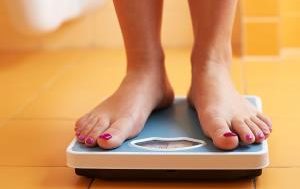Penn State students who have a New Year’s Resolution involving eating healthier can follow an award-winning diet plan that was developed at Penn State.
Volumetrics, a dieting approach developed by Penn State nutritional sciences professor Dr. Barbara Rolls, was listed in U.S. News and World Report’s annual rankings for being one of the most effective diets to follow in a wide variety of categories.
Dr. Rolls serves as the Helen A. Guthrie Chair Director at the Laboratory for the Study of Human Ingestive Behavior, where she, along with her colleagues and students, study how the different properties of foods affect a person’s satiety, or how full someone feels, through weight loss trials and data from similar labs around the world.
After compiling all of this evidence-based research, Dr. Rolls came up with the Volumetrics diet and published the book Volumetrics: Feel Full on Fewer Calories in 1999. She followed up her first book with The Volumetrics Weight-Control Plan in 2005, The Volumetrics Eating Plan in 2007, and The Ultimate Volumetrics Diet in 2012.
Volumetrics has been a mainstay in U.S. News and World Report’s diet lists since
“I’m happy with where we’ve landed [in the rankings,] yet always somewhat surprised,” Dr. Rolls said.
When asked how Penn State students can adhere to the plan, Dr. Rolls praised the dining halls for their amount of options and said students should have no problem filling up their plates with water-rich foods.
“Water gives you satisfying portions because it adds weight and volume to food with no calories.”
Water-rich foods available at dining halls include vegetables, fruits, soups, salads, yogurts, and on a lesser scale, meat and eggs.
“Looking for those kinds of foods is going to help you lower the overall density of your diet,” Dr. Rolls said.
Dr. Rolls then referenced a buffet study her lab keeps replicating that determined that if the lower density food tastes similar to its higher density counterpart, people will generally eat the same weight.
“So, if you’re eating a consistent weight of food each meal, and the density of calories in the food is less, you’re going to automatically be eating fewer calories,” Dr. Rolls said.
When it comes to avoiding fatty, high-caloric foods like salad dressings and cheeses, Dr. Rolls has an important piece of advice: “Cut back on that if you can, but don’t sacrifice taste.”
Dr. Rolls’ other piece of dining hall advice is to eat the lower-density foods like fruits and vegetables before going to the heavier stuff, as the lower-density foods will satisfy hunger quicker and will result in eating less.
“This is not reinventing nutritional science,” Dr. Rolls said. “Go for your fruits and veggies, fill half your plate with that and then take reasonable portions of your grains, your meats, and your higher-density calorie foods.”
There are no foods that are off-limits in the Volumetrics diet, but Dr. Rolls says you must discipline yourself with managing the portion size of your higher-density favorites.
“Trying to cut something out of your diet altogether is going to potentially make you want it more,” she said. “So you must manage fitting in these foods without overdoing it.”
Dr. Rolls also warned of the dangers of high-calorie beverages like soda, as they can cancel out the calories you are avoiding with high-density foods.
The Volumetrics diet does not recommend shifting your diet completely, as Dr. Rolls does not believe it is sustainable.
“I want people to figure out how they can tweak what they’re doing so they still enjoy what they’re doing and feel satisfied,” she said. “So really, it’s all about learning healthy eating.”
Please choose an option below.
OR
Support quality journalism:



